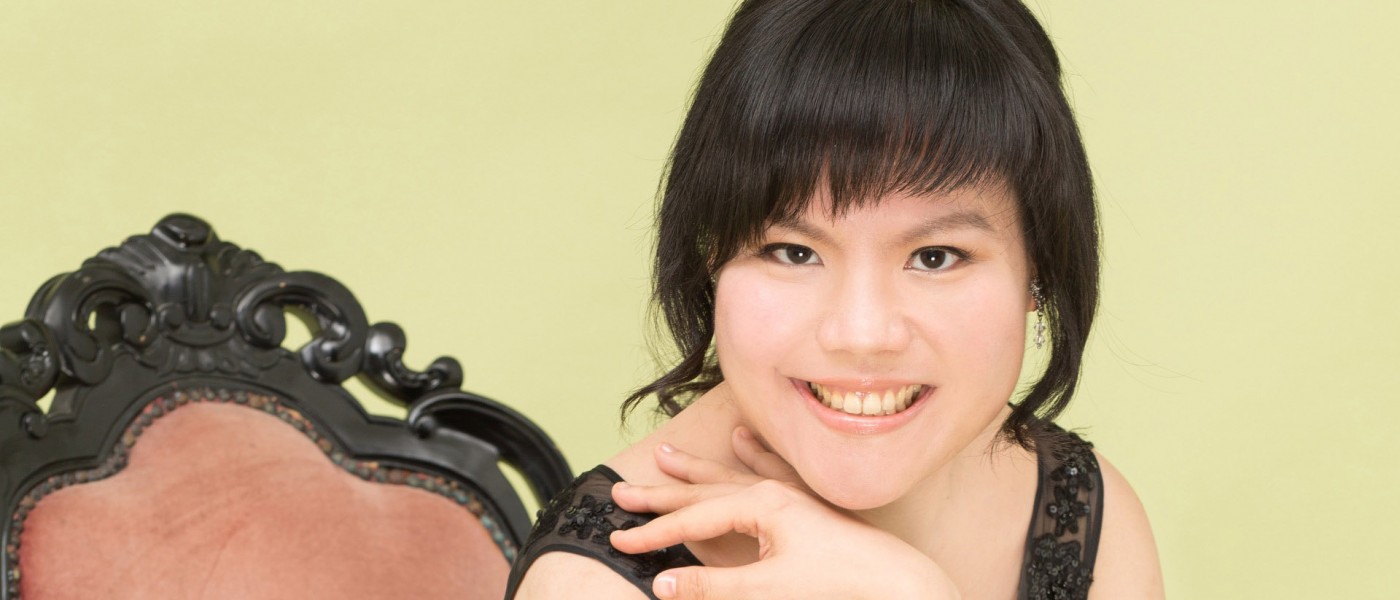Distinguished Concerts International New York presents Tzu-Yi Chen in Review
Distinguished Concerts International New York presents Tzu-Yi Chen Tzu-Yi Chen, piano Weill Recital Hall at Carnegie Hall, New York, NY October 11, 2014
A magnificent recital took place on October 11 by Taipei-born pianist Tzu-Yi Chen. I am going to have to discipline myself not to use every superlative in the first paragraph. Suffice it to say that, in a wide-ranging program, she displayed not only the usual technical command one expects, but beautiful tone, total artistic involvement, deep feeling, stylistic understanding, and in an era of cookie-cutter musicians, the feeling of spontaneity, even risk, that makes an evening truly memorable, often electrifying.
The first half of the recital was devoted to “classicism/variation” and the second half to “programmatic illustration.”
Ms. Chen opened with a jewel of late Mozart, Nine Variations in D major on a Minuet by Jean-Pierre Duport, K. 573, written in 1789 to curry favor for possible employment in Potsdam, to a minuet tune by Prussian King Friedrich Wilhelm’s cellist. The theme, ninety percent of which -adheres only to notes found in the tonic triad, was presented with limpid grace, perfect phrasing, and breathing that never went overboard. Each variation unfolded with a plan, yet managed to sound as if she was improvising it on the spot. Each repeat was taken, with subtle and tasteful color differences that never overstepped the vocabulary of the period. In the heart-rending D Minor variation, Ms. Chen inhabited it as if it was a lost lament intended for Pamina in Die Zauberflöte, with the fatality of the Neapolitan sixth chord experienced deeply. Next came one of middle-period Brahms’ more massive creations, the Variations and Fugue on a Theme by Handel, Op. 24. Even from the opening notes of the original Handel, Ms. Chen presented the audience with the sound world of Brahms, an interpretation with which I agree. Every single tempo change and nuance was observed, with never a feeling of over-planning. The music simply seemed to be welling up from some secret source within her. Her sense of lyricism and rubato was beautiful. Her pedaling created sophisticated mixtures of harmony, which are specified by Brahms or at least implied by the notation. I can only single out a few highlights from this giant work: Var. VI, the misterioso was the spookiest I’ve ever heard; Var. XII, the soave was indeed suave; Var. XIV, the sciolto (literally: unbound, or non-legato) was ecstatic; Var. XXII, the Musette floated on a cloud of B-Flat; the mad whirling of Var. XXIV was hair-raising. The fugue was presented as a grand quasi-orchestral sonority, complete with majestic bell-ringing.
After intermission, Ms. Chen played the Suite Astrologique for Piano by a fellow-countryperson, Lan-In Winnie Yang (b. 1980). I’m glad the composer didn’t feel the need to follow the calendar, but arranged the twelve short vignettes, one for each sign, in an order that allows the music to flow best. Her work has many audible influences, Scriabin, Chopin, Schoenberg, Rachmaninoff, even a wink here and there to jazz or ragtime, but it manages to remain original and atmospheric, especially when confided to the rich tonal palette of Ms. Chen. If one had stripped the titles from each piece and simply called the totality “Suite,” I feel it still would have had impact. Ms. Chen closed with the titanic Pictures at an Exhibition by Mussorgsky, illustrations in music of artworks by a recently deceased friend of the composer, Victor Hartmann. From the opening notes of the first “Promenade” (Mussorgsky’s unifying device that represents walking through the gallery from picture to picture), she became a completely authoritative “Russian” pianist in tone and brilliance. She really opened up for this work’s fierce demands, but always put the emotional content first. One of my favorite sections, not the loudest or fastest, has always been “Catacombs: Con Mortuis in Lingua Mortua” (With the Dead in a Dead Language), which Ms. Chen played as though she herself had either invented the catacomb many thousands of years ago, or been trapped in one. The audience rose to award her a richly deserved standing ovation after she dispatched the octaves of the “Hut on Fowl’s Legs (Baba-Yagá)” with ferocity, and the “Great Gate of Kiev” was depicted triumphantly.
She favored us with two encores, first the final movement of the Ginastera Piano Sonata No.1, Op. 22, marked Ruvido ed ostinato (rough and obstinate), which was white-hot, and played with both total abandon and control, if that’s not too paradoxical. In the second encore, the Bach/Busoni Ich ruf zu Dir, Herr Jesu Christ emerged as a plaintive call of homesickness to her native country. She has traveled much for her training: Paris, Germany, and she now resides in Washington DC, where she must bring great joy and fine instruction to her students in the Levine School of Music. I would like to hear some of French repertoire the next time she appears and there certainly will be many, many more times.

